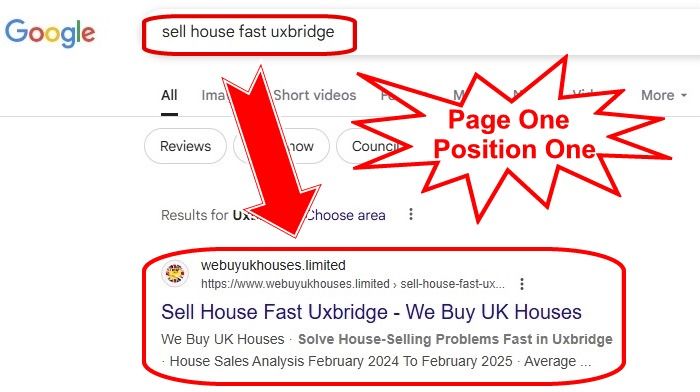How Can Sellers Find Me With A Google Search
Jun 20
/
David Lee
Paying for Google Ads is so expensive in “real estate”—but what would it mean for you if motivated sellers could still find you at the top of the list, or at least on page one? This month, I’ll walk you through a few simple steps I applied to achieve exactly that in just the past few days. I’m so impressed with the results that I’ve decided to include them in this month’s newsletter, so you can do the same.



1) Is Your Website Layout Helping or Hurting Google?
As I update our systems to 2025, I am imagining myself as someone starting out in property with little or no money. Last week, I set aside time to test out some steps that could help get a motivated seller to my website from a page-one Google search. The closer I could get my targeted-area pages to the top spot, the theory is that the response rate should increase exponentially.
The diagrams above show both the objective and the result, yet now I know there are a few more simple tasks that can be applied to improve the results already achieved. As with anything unfamiliar, people often dread learning something new, but as with most things, there is a system involved and we just need to reverse engineer the end result back to the beginning. So, what are we reverse engineering? Making it easy for Google to understand what we do for relevance to a user search. We therefore need to make our webpages Google-friendly, and not unfriendly.
The diagrams above show both the objective and the result, yet now I know there are a few more simple tasks that can be applied to improve the results already achieved. As with anything unfamiliar, people often dread learning something new, but as with most things, there is a system involved and we just need to reverse engineer the end result back to the beginning. So, what are we reverse engineering? Making it easy for Google to understand what we do for relevance to a user search. We therefore need to make our webpages Google-friendly, and not unfriendly.
2) Build a Bridge Between Your Search Result and webpage
As we move closer to the moment someone lands on your website, the message in your search result must match your webpage. If using WordPress, this can be found on the “Edit Page” using a plugin like “Yoast” or “All In One SEO”. Originally, my home page was just a general overview of the services I offered—nothing tailored, nothing targeted. There was no clear bridge between what the searcher typed into Google and what my home page actually said. This one shift laid the foundation for everything that followed. I was going to have to create a specific webpage for each of my targeted areas.
As a direct result of this, I put myself in the mindset of the motivated seller and asked myself, as an example, “What potentially could that person type into Google?” In their mind, if they live in Uxbridge, it could be something like “sell house fast Uxbridge”. That’s what they think and that’s all they know, so I’m not going to fight that logic.
As a direct result of this, I put myself in the mindset of the motivated seller and asked myself, as an example, “What potentially could that person type into Google?” In their mind, if they live in Uxbridge, it could be something like “sell house fast Uxbridge”. That’s what they think and that’s all they know, so I’m not going to fight that logic.
3) Landing at Your Destination on Time and as Expected
Now you can see why Google aims to connect searchers with the most relevant page that matches exactly what they are looking for. Even if you have a great headline and text, if it doesn't align with what the motivated seller is typing into Google, your page won’t rank well. And one more thing—being on page one isn’t enough if your message sounds just like everyone else’s. Your words need to stand out to catch clicks.
Google is looking at your webpage’s meta description, SEO tag, initial heading and first paragraph to ascertain the relevance of your page to the search. This is important! There must be a consistency in your target key-phrase that naturally makes up each of these entities. The body of the page should support the keywords entered, giving the algorithm more to analyse when reviewing your entire website. At the same time, it should confirm you’re not overloading it with unnatural keyword spam. As long as each page contains unique content, the algorithm has more material to analyse—and more reasons to rank your site higher overall. Beyond these basic steps, that’s all I did.
Google is looking at your webpage’s meta description, SEO tag, initial heading and first paragraph to ascertain the relevance of your page to the search. This is important! There must be a consistency in your target key-phrase that naturally makes up each of these entities. The body of the page should support the keywords entered, giving the algorithm more to analyse when reviewing your entire website. At the same time, it should confirm you’re not overloading it with unnatural keyword spam. As long as each page contains unique content, the algorithm has more material to analyse—and more reasons to rank your site higher overall. Beyond these basic steps, that’s all I did.
Join our newsletter!
Thank you!
Write your awesome label here.


